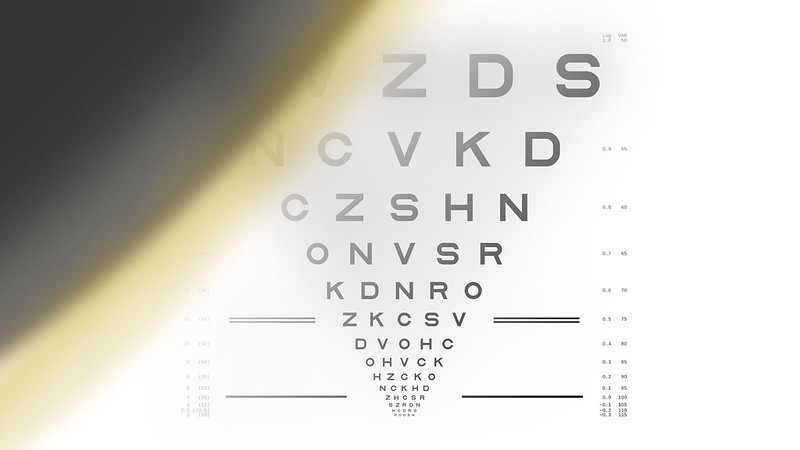
Current global financial conditions make it difficult for publicly traded biotech companies to raise money through conventional stock offerings, so some companies are finding alternatives. Opthea Limited, an eye drug developer whose most advanced program is an experimental treatment for the wet form of age-related macular degeneration (AMD), has secured up to $260 million in a pair of deals that will support ongoing Phase 3 tests of its lead asset and lay the groundwork for the product’s potential commercialization.
In the first of the deals announced late Sunday, Melbourne, Australia-based Opthea could receive up to $170 million from a life sciences investment firm and its affiliates. The second deal is a $90 million private placement with institutional investors. All of these investors are betting on the future success of the drug, OPT-302, which could have preliminary Phase 3 data in two years showing how it compares with currently available blockbuster drugs that treat wet AMD.
The bigger of the two deals is with Carlyle and its newly acquired life sciences investment arm, Abingworth. They’ve formed Launch Therapeutics, a new company that offers pharmaceutical and biotechnology firms a range of financing models to support the late-stage development of drug candidates. These investors have agreed to pay Opthea $120 million in three installments. The deal also gives these investors the option to commit another $50 million.
Carlyle and its affiliates aren’t taking equity in Opthea and the biotech isn’t giving up royalties or rights to OPT-302. Instead, the drug developer agreed to pay the investors sums tied to the drug’s progress. Opthea will make a milestone payment upon the drug’s regulatory approval in the U.S., U.K., or European Union. In addition, the biotech agreed to pay these investors six fixed annual “success payments.” Opthea also agreed to variable payments equal to 7% of net sales of the drug. The total amount that Opthea pays out is capped at $680 million—four times the funding amount that the company receives, assuming the investors commit to the full $170 million.
The second deal could bring Opthea up to $90 million in a private stock sale to institutional investors. Those investors are buying shares in the biotech at a new share price of 1.15 Australian dollars, which is a 12.6% discount to the stock’s 10-day average price as of Aug. 10. This stock sale will take place in two tranches. The first one, which will bring $42.5 million, is expected to take place around Aug. 24; a second tranche of $47.5 million is subject to shareholder approval at a general meeting scheduled for Sept. 26.
Wet AMD is a disorder in which abnormal blood vessel growth in the back of the eye causes deterioration of the macula, a part of the retina. The fluid or blood leaking from these blood vessels causes blurriness or a blind spot in a patient’s central vision. The disease affects an estimated 1 million in the U.S. and 2.5 million in Europe. Standard treatment includes drugs injected into the eye, where they block vascular endothelial growth factor (VEGF), a protein that contributes to the abnormal growth of blood vessels. Approved wet AMD drugs—Roche’s Lucentis, Novartis’s Beovu, and Regeneron Pharmaceuticals’ Eylea—specifically address VEGF-A. In addition, Roche cancer drug Avastin is prescribed by some physicians for the off-label treatment of the eye disorder.
With OPT-302, Opthea doesn’t aim to supplant the current slate of wet AMD therapies. Instead, it hopes that a combination approach will better help patients, particularly those whose disease is not responding to a VEGF-A inhibitor alone. The abnormal blood vessel growth behind wet AMD is driven by more than one VEGF protein, Opthea said in an investor presentation. Instead of targeting VEGF-A, the Opthea drug is a fusion protein engineered to stop two other blood-vessel growth proteins, VEGF-C and VEGF-D. Both proteins are elevated when VEGF-A is blocked, which could diminish the effect of drugs that work solely by targeting VEGF-A. By combining its approach with the currently available VEGF drugs, Opthea contends its drug could offer a way to more broadly shut down the pathways driving wet AMD. In a Phase 2b test, Opthea reported that its drug met the main goal of showing superior visual acuity compared to Lucentis.
Two Phase 3 studies are underway testing Opthea’s drug. One will compare the combination of OPT-302 and Lucentis to treatment with Lucentis alone. The other will test the Opthea drug and Eylea compared to Eylea alone. The main goal is to show change in visual acuity at week 52. Dosing will continue up to week 96 to assess long-term safety. Opthea projects that it will enroll nearly 1,000 patients in each of these global studies. If the 52-week data show efficacy, Opthea plans to submit marketing applications for the drug in the U.S. and Europe, the company said in the investor presentation.
Opthea’s new financing agreement comes less than two weeks after Carlyle, a global investment firm, completed its acquisition of Abingworth, a life sciences investment firm with $2 billion in assets under management. The financial terms of that acquisition were not disclosed.
OPT-302’s opportunity may extend beyond wet AMD. Diabetic macular edema (DME), an eye disorder that is a leading cause of vision loss in the elderly and diabetic patients, develops in a way similar to wet AMD. Opthea has completed a Phase 1b/2a study in DME. But for now, the company’s main focus is developing the drug for wet AMD. In the announcement of the financing deal, Opthea CEO Megan Baldwin said that the cash is expected to fund the company through the reporting of preliminary Phase 3 data in mid-2024.










